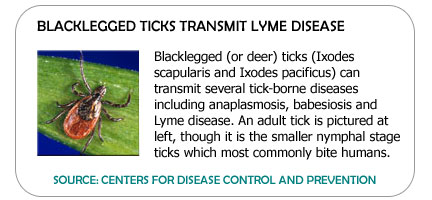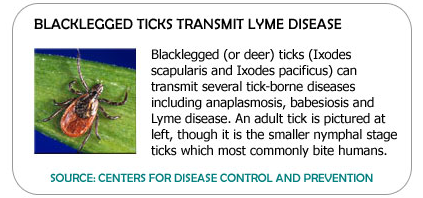Lyme Disease on the Rise
Lyme disease is sometimes a work-related issue and sometimes not. You need to ask yourself if your employee’s job duties put them at risk of contracting the disease. Do they work where ticks thrive? Forests, brush or shorelines?
If the answer is yes, the bottom line is you need to teach employees how to keep ticks at bay in the first place and how to spot signs of the illness for early treatment.
The Centers for Disease Control and Prevention (CDC) report that cases of Lyme disease are on the rise:

A combination of the public’s awareness of Lyme disease and their recognition of symptoms is one reason for the rise in reports. A second reason is an increase in ticks that carry the disease.
Transmission
The disease normally lives in mice, squirrels and similar small creatures. Depending on the region of the country, it is transmitted by different species of ticks. In the northeast and north-central regions of the U.S., the blacklegged or "deer tick" is the primary carrier.

Symptoms
According to the CDC, quite often, the first sign of infection is a distinct bull's-eye rash that typically shows up several days after infection and occurs in about 70% to 80% of those afflicted.
If left untreated, symptoms can include:
- Loss of muscle tone on one or both sides of the face (called facial or “Bells palsy")
- Severe headaches and neck stiffness
- Shooting pains that may interfere with sleep
- Dizziness and heart palpitations
- Pain that moves from joint to joint
Many of these symptoms may go away without treatment. However, approximately 60% of those who go untreated will suffer other signs of discomfort such as bouts of arthritis with severe joint pain and swelling. Months or even years after an infection, a person may experience shooting pains and numbness and tingling in the hands and feet and even memory loss.
Prevention
Currently, there is no vaccine, so prevention is the key in avoiding Lyme disease, says the CDC. The best way is to keep the little critters off you. Some proven ways to do this are:
- Wear long-sleeved shirts and pants when outdoors
- Treat your clothes and exposed skin with insect repellent
- Do a whole body inspection for ticks after being outdoors, especially in areas that have a known tick infestation
- Check your pets, too—they’re potential carriers
Treatment
Studies have shown that antibiotics are a viable treatment if detected early. For more information about treatment and prevention, visit Learn about Lyme Disease.
